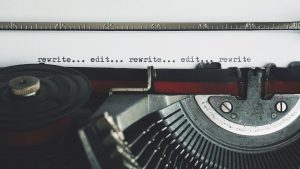The word “essay” originally comes from the French “essai,” meaning “an attempt.” An attempt to do what, exactly? Well, that is the question this texts hopes to answer. It is an attempt to first understand a concept more deeply, and then to explore its larger implications in relation to both writer and reader. The methods for creating a successful college essay are not the same for everyone. Some writers require complete silence with no distractions, while others crave noise and interaction while they work. Some are writing in their own native language, and others in a second, or even third language. Some of us are very political and feel comfortable challenging authority and the status quo, others feel more comfortable trusting authorities and following instructions carefully. Many of us also have little choice concerning how and when we get to write. We fit it in between life and work, marriage and children, and death and taxes. But a few questions remain, and even gain strength in this new and unpredictable world we live in: “Why bother? What practical reasons do we have for making students create these ancient documents to begin with?” The answer is both more complex and simple than we may imagine. The short answer is, because the essay writing process in one of the most effective ways for us to develop our skills in understanding, investigating, and collaborating with others on important topics and ideas. It is also one of the most potent self-education tools we have ever developed. The best way to learn more about a topic is to write an essay about it. So the purpose of the technology of essay writing is to learn, more than to teach. To explore, more than to explain. To generate and experience communal knowledge, not to bludgeon others with our own isolated ideas of truth. To write a good essay, we must bring our ideas into meaningful dialogue with the thoughts and ideas of others, and in the process, we learn more about both the topic under consideration and our own ways of making sense of the world. Essay writing is most effective when we are not afraid of being wrong or of being right. It works best when we see it as a process of discovery. And it works best when we bring our full selves to the exercise.
The Process
While no guide can help you find what exact situations will work best for you, there are aspects of the process that, when basically followed, promote a cleaner, more stable final draft. These six general stages are: discovery & investigation, prewriting, drafting, revising, editing, and formatting.
Discovery & Investigation
The first step in writing a successful college essay requires an active engagement with your sources. Simply reading a source for basic content is not quite enough. The questions should not be simply “What does this say?” or “What happened?” but rather “Why did that happen?” “What does that say about the larger themes and ideas I am exploring?” and “How does this help advance my thinking into the deeper layers of this topic?”
Make notes of your thoughts, ideas, and reactions as you read. Research is about following the conversation into your sources and allowing your sources to “talk to one another” as you develop your own presence in the conversation. What new questions emerge as your initial questions are answered? How do your sources relate to one another as you dive deeper into a research topic? Have you checked enough into alternative views and perspectives to make sure you are not reaching a biased perspective too quickly?
As you become more informed on the topic, your voice will begin to emerge, and even direct the conversation. But now it will be a voice as rooted in authoritative research as it is in your own valid experience and perspective.
Once you have completed an active reading of a primary source, it will often be necessary to obtain secondary sources to back up your thesis. Peer-reviewed journals available online through the college databases will be your most commonly used secondary resources. But remember that other search engines, such as Google Scholar, can yield strong results too.
Prewriting
Prewriting is the step in which tools such as free writing, brainstorming, outlining, or clustering are used. In prewriting, no idea is too off-topic or too strange to pursue. It is these sometimes outlier ideas that can lead you to a paper topic that you never would have considered otherwise. There will be time to eliminate and consolidate later. For now, cast the net as wide as you can. Let your curiosity guide and motivate you here. Again, you will have time to tailor and sculpt your prewriting ideas to fit the parameters of your given assignment later. For now, just let your mind wander. Be open, curious, and attentive to where your questions lead you.
Though the common perception is that there is nothing that hasn’t been written about before, if you allow yourself to think outside the box, you can find a way of looking at an old topic through new eyes. Or a new topic through wise and measured perspectives. Even if it has been covered by another writer, you will be able to bring your unique perspective and relevant experiences to the larger discussion through initially casting a wide research net to pull in potential new ideas and relevant associations.
It is also during prewriting that the writer needs to make a decision about audience. Asking questions like: “Who is going to read my paper?” “What is the purpose of this paper?” and “Why are they going to read my paper?” will help you set your audience. The simple answers to these questions are “My professor” and “Because they assigned it.” But these are not the true answers. It could be that your paper needs to be geared towards peers and fellow students, participants in a seminar, colleagues at a conference, or your family and neighbors.
Regardless, consideration of audience is crucial for setting tone, voice, and perspective in a developing essay. The language and tone for each of these possible audiences would be very different. Sometimes slightly, sometimes considerably. Considering this also helps you set your relationship to the topic and to the audience in ways that will make the essay more readable and accessible.
Drafting
Drafting is the beginning of “writing” your paper. It is important to remember that in drafting you should already have a thesis idea to guide your writing. Without a thesis, your writing will be prone to drift, making it harder to structure after the fact. In drafting, the writer should use materials created in the prewriting stage and any notes taken in discovery and investigation to frame and build body paragraphs. You may change your thesis as you go. In the beginning, it is only advisable to have a general idea of where you are going regarding thesis. The more clarity here, the better. But don’t let an unfocused or underdeveloped thesis stop you from getting started. You can always return to it and sharpen it as you go deeper into the essay.
Many writers will tackle their body paragraphs first instead of beginning with an introduction (especially if you are not sure of the exact direction of your paper). Beginning with body paragraphs will allow you to work through your ideas without feeling restricted by a specific thesis, but be prepared to delete or alter paragraphs that don’t fit your eventual big idea.
Also be prepared to move body paragraphs around, if necessary, to better fit your pattern of development and thesis. Afterwards, create opening and concluding paragraphs (with an appropriately revised thesis) that reflect the body of your essay.
Revising
There are three different scopes of revision: global, regional, and local.
Global revision involves looking for issues like cohesion of your main idea(s) and the overall progression of your essay. If your essay has paragraphs that do not flow into each other, but rather change topics abruptly only to return to a previous thought later, your essay has poor cohesion. If your thesis is too generic or is not sufficiently developed and supported in the body of the essay, you need to explore this level of revision. If your topics change too drastically from paragraph to paragraph, it is necessary to consider altering the order of your paragraphs and/or revising your writing by either adding to existing paragraphs or creating new ones that explain your change in topic. An essay with a logical flow and smooth transitions is significantly easier to read and understand. These are the bones of the essay.



